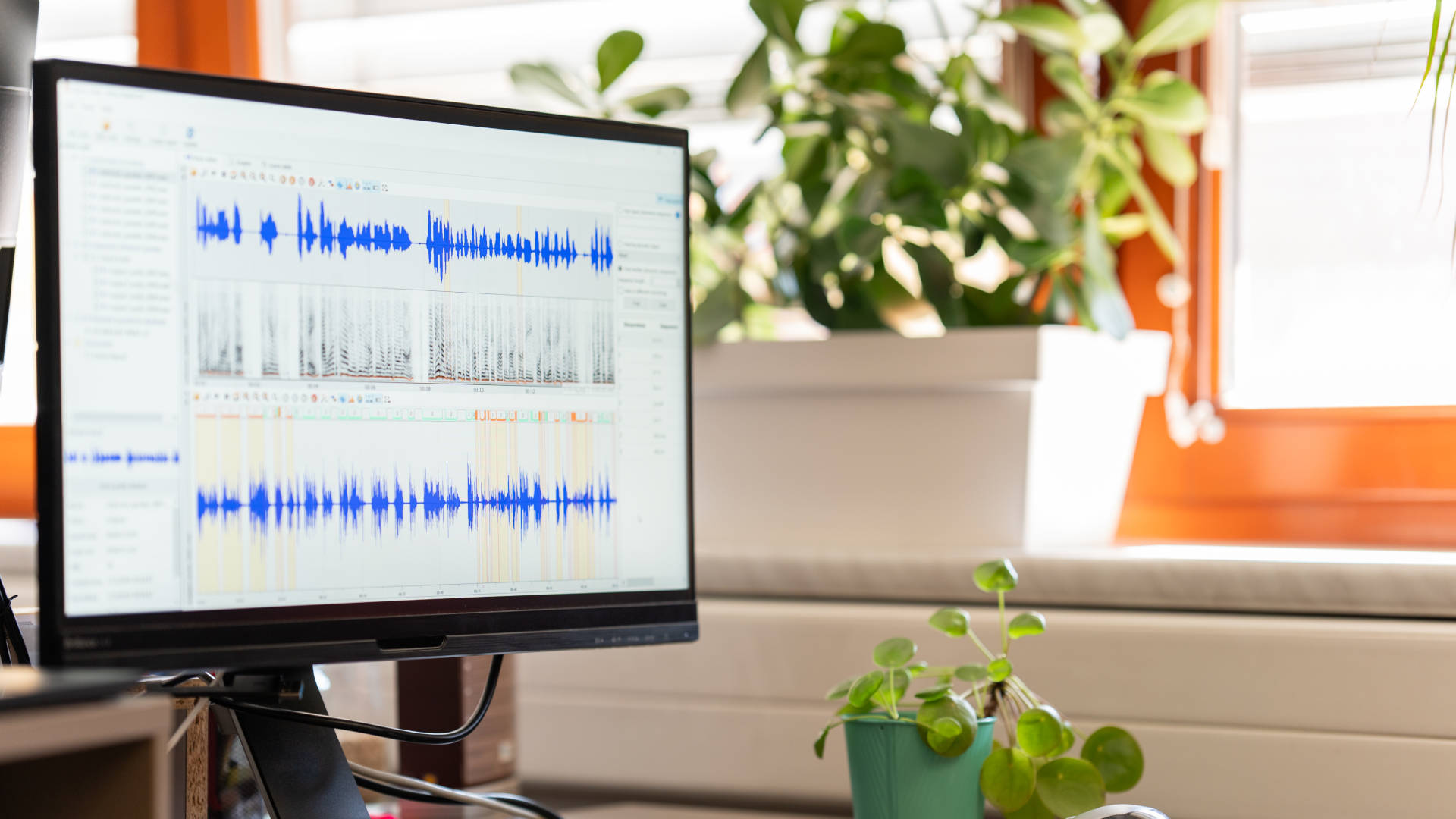7 Benefits of Voice Biometric Authentication in Call Centers

March 25, 2021
By Pavel Jiřík in Blog
Every company that collects customer data and works with it must be rigorous about data protection and proper data authentication. With constant technological developments and new advanced solutions hitting the market every day, this might seem like an easy thing to do. But technological advances that are constantly and positively changing the world also provide new opportunities for those who want to earn money illegally through fraud or cybercrimes.
It’s still easy for fraudsters to operate online or via telephone. And how do you authenticate a customer over the phone? What are the best ways for organizations to protect customer data and, at the same time, offer a seamless customer experience?
This article aims to discuss how the relatively new but already advanced technology of voice biometrics can help businesses, especially call centers and contact centers, to authenticate customers and stay ahead of the fraudsters. But, before we get into details, let’s consider one more thing. What information does a call center use to verify the identity of its customers in the first place? The most common way to authenticate them is by personal data like name, date of birth, login, and/or phone number. But is it the safest method?
Certainly not. Voice biometric authentication and voice biometrics solutions are the future of contact center authentication. It means security for customers, a better customer experience, and improvements in contact center agents' work.
Let’s explain a few things before we list the benefits of voice biometric authentication in call centers.
What Is Biometric Authentication in the First Place?
Biometric authentication is simply the process of verifying a person’s identity using their unique characteristics and then allowing them to log into a service, application, or device, etc.
To understand it better, biometrics is the general name for any type of body characteristic or identifier like a facial pattern, fingerprint, voice, iris pattern. Biometric identification verifies that "you are you" based on a chosen characteristic or a body part. Biometric authentication goes one step further and uses that biometric identifier to compare whether it matches the person's biometric information already stored in a database, allowing them to access a given environment or perform certain actions.
To put it simply: biometric identification is like a neighbor looking through the keyhole at two people who knocked on the door. The neighbor decides which one of them is David based on height, hair color, eye color, face, voice, etc. Biometric authentication is when the neighbor looks through the hole and lets the person in if it is David, but if it's not then the door stays locked.
The concept is simple. The complicated part is the technology behind it, and we will cover that in this piece on voice biometric authentication.
Voice Biometric Authentication - What Is It?
Voice authentication is a technology that uses a person’s voice to identify and validate their identity. This type of biometric solution is very effective and fast at processing voice patterns. Implementation of such systems is also straightforward.
It is important to note here that voice-based biometric authentication is not the same as speech recognition technology. The latter recognizes words as an individual speaks (e.g., speech recognition systems in smartphones), but it is not biometric technology.
How does voice recognition biometrics work, then? To ensure the correctness of the biometric authentication system, a voice enrollment phase (which can be done based on as few as 20 seconds of speech) is necessary. In this phase, a person's unique biometric voice patterns are processed, stored as a voiceprint, and secured in a database. This information will later allow validation and identification of an individual by the system.
The Main Characteristics of Voice Biometrics:
- It is an accurate and reliable biometric technology that allows customers to interact with the system to authenticate themselves, validate their identity, or, for example, sign documents by voice.
- Voice biometrics answers the question "who is speaking" rather than "what is being said".
- It compares hundreds of unique voice characteristics against the previously saved voiceprint.
- It helps prevent fraud and identity theft.
For customers, this system represents a great leap forward in terms of security and transparency, which translates into a very positive image of the company or organization.
What Can Voice Recognition Be Used For?
Voice recognition and voice authentication can be used in many, many ways. One of the most common is, as already indicated in this article, biometric identity verification. Various companies can use voice biometrics to seamlessly identify customers and offer them multiple services faster than with a more traditional authentication process.
Voice authentication can also be used as a part of a multi-factor identity authentication solution.
The types of companies that can benefit from implementing voice biometric authentication in their day-to-day business come from many various industries. Those that can benefit from the most advantages are healthcare, the financial services industry, insurance, utilities, telecommunication, travel and hospitality, or even governmental organizations. With ever-tighter industry regulations and growing cyber fraud, biometric authentication may well be a silver bullet for counteracting fraud.
Voice Biometric Call Center Authentication - Benefits
Voice biometric authentication has many different applications, and now you already know how it works. So let’s move on to discuss the benefits of leveraging voice biometrics technology in call centers.
1. A More Secure Authentication Solution
Voice biometrics solutions are one of the safest ways for customers to verify themselves. They don’t have to share their personal data over the phone, fill out an online form, or answer a series of questions to be identified as themselves. Customers of call centers that use voice authentication can also be sure that the collected data is safe and not prone to any attempt of fraud or cybercrime.
2. Improved Customer Satisfaction
Every improvement during customer interaction with a call center means a noticeable increase in customer satisfaction. Less time spent on proving their identity, faster resolution time, no passwords or logins to remember, lower risk of fraud. It’s worth mentioning a study that shows almost 112 million Americans use voice assistants at least monthly, which means they are used to this kind of technology and can adapt to new voice-powered solutions quickly.
3. Strong Omnichannel Customers Experience
A single authentication platform that supports all call center operations can eliminate multiple authentication systems, resulting in savings worth millions of dollars. Reductions in time and processes mean substantial economic savings. What’s more, the same authentication method used in various channels helps companies offer an omnichannel customer experience.
4. Happier Agents
Less time spent on customer authentication, fewer customers frustrated because of long waiting times, shorter average handling times, less concern about possible fraud. These are tangible advantages of voice biometric authentication that make the work of call center agents easier and less stressful. And happier agents means happier customers, right?
5. Phone Fraud Detection
The best voice biometrics technology not only works as a method of authenticating customers and proving their identity, but can also help agents detect telephone fraud. With a reliable voiceprint and a biometrics solution up and running, agents can get real-time risk scores for every call they conduct. Based on that real-time information, they can proactively counteract any illegal activity.
6. Shorter Average Handling Times
Thanks to efficient contact center authentication, customers can connect with agents faster than when going through a “traditional” identity check process. This means that the verification time is shorter. At the same time, the average handling time - that is, the time spent by customers from initiating a call until their request is resolved - is considerably shorter. Data indicates that businesses can reduce their average handling time by an average of 30+ seconds per call with voice biometric authentication.
Also, hold times, i.e., periods when customers are not being assisted but are “put on hold,” are usually shorter because agents can do more in less time.
7. Increased ROI
As mentioned above, voice biometrics improve call center performance by shortening waiting times, average handling, and hold times, etc. All of this equates to extensive time savings and agents working more efficiently. Increased ROI and growing revenue are the natural consequence of these improvements. In fact, research has found that voice biometrics technology can save millions of dollars for companies that leverage these solutions. Voice biometrics can reduce the steps and time involved in verification processes by 70-80%.
Conclusions
More and more businesses need to counteract possible fraud and attempts at data theft. To ensure a seamless authentication experience for customers and to secure their and others' data, various businesses - including call centers - should aim at leveraging the latest technological advances such as voice biometric authentication. It’s one of the safest and most efficient methods of customer authentication in call centers and other organizations working with vast arrays of sensitive data and information that is prone to fraud.


